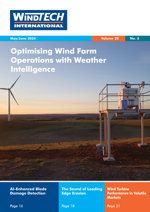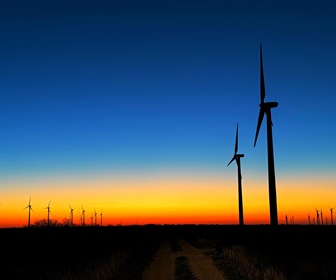 In the pursuit of sustainability, industries across all sectors worldwide are undergoing a transformative shift from a linear to a circular economy system of production and consumption. The wind sector is not an exception and plays an important role not only in the renewable transition but also in the representation of the global drive towards embracing a circular economy approach.
In the pursuit of sustainability, industries across all sectors worldwide are undergoing a transformative shift from a linear to a circular economy system of production and consumption. The wind sector is not an exception and plays an important role not only in the renewable transition but also in the representation of the global drive towards embracing a circular economy approach.By Justin Canup, Director of Business Development North America, Spares In Motion, USA
In recent decades, the wind sector has grown exponentially, with larger, more sophisticated and more numerous wind turbines. Yet, prioritising circularity, sustainability, and resource efficiency to spearhead this transformative change remains a top priority for stakeholders across the whole value chain. The wind industry’s circular practices are being incorporated from the design and manufacturing phase to maintenance and end-of-life management.
The establishment of circular supply chains is increasingly considered a central part of this approach because it is known that, over time, wind turbines and their parts undergo ageing and wear, leading to diminished efficiency and increased downtime. Repairing and optimising these components extends the useful lifespan of turbines, maximises resource efficiency, saves operational costs, minimises waste and reduces carbon emissions.
These circular strategies give a new life or repurpose complete wind turbines or components, such as gearboxes, generators, blades, complete nacelles, and minor correctives in different conditions (as is, refurbished, repaired). Repair capabilities and added-value services, such as the exchange service for critical components, support ongoing maintenance processes and operational sustainability throughout and beyond the useful lifespan of wind turbines. It is also often the case that these critical parts are no longer supported by their OEMs, and repairing and reusing the components from dismantled turbines is the way to guarantee supply chain support for these older models. Indeed, it is a more competitive solution than purchasing new parts with longer lead times.
These circular practices aim to promote more sustainable and cost-effective utilisation of existing infrastructure and to offer alternatives for new manufacturing and its associated carbon emissions. It is possible to estimate and measure carbon savings through refurbishment processes; for instance, the carbon dioxide calculator developed by Spares in Motion, in cooperation with the University of Colorado, comprehensively considers the material’s origin, logistical aspects of its transportation to the manufacturing site, and the environmental impact of waste generated from discarding parts that could potentially be refurbished. This technology assists customers in making informed decisions that resonate with their sustainability goals and inspire them to contribute meaningfully to a greener future.
Briefly, the pursuit of wind turbine performance optimisation, within a circular economy framework, holds immense potential for achieving significant changes and advancing sustainability goals while simultaneously driving economic growth and social progress. Wind stakeholders also seek improved operational productivity, compliance with regulations, and access to incentives such as subsidies or tax breaks for sustainable initiatives. By adopting advanced strategies to leverage refurbishment and other sustainable solutions, such as circular supply chain management and collaborative innovation, the sector paves the way for long-term industry growth and competitiveness in the transition towards a better and greener future.









